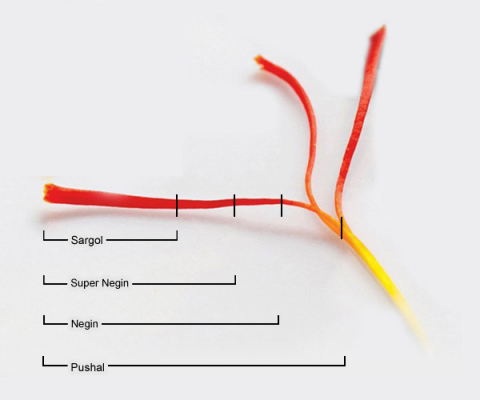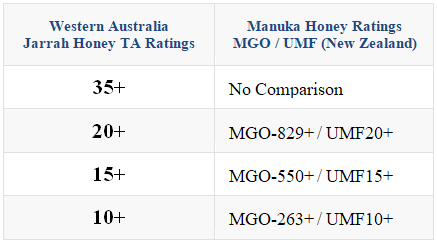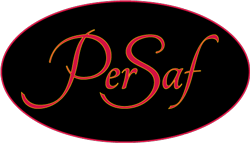Saffron FAQ's
Super Negin is considered to be the best of the best of all saffron grades. It’s also the most expensive and rare trim of Saffron. Super Negin saffron is known not only for being the most potent, flavourful and rich aroma but also for its aesthetically pleasing features. Super Negin threads are longer in length and contain no yellow or orange threads.
Saffron grades/classifications:
Super Negin: The highest quality saffron due to its long, fully-red threads which are free of the yellow/orange stem. It offers maximum flavor and aroma.
Negin: These saffron threads contain a small amount of yellow coloring from the stem, which results in a slightly lower concentration of saffron compared to Super Negin.
Sargol: Meaning “top of the flower” in Persian, Sargol saffron is made up of only the red stigma tips. This type of saffron may have lots of broken threads.
Pushal: The most affordable type of saffron, but it includes a significant amount of the orange/yellow parts of the plant that are considered to have little to no value.
Sellers are trying to out do eachother with terms such as A+++, but when buying saffron, if you stick to the above classifications, you can be confident of the quality you’re buying
From a reputable seller, “Premium/Grade A+” means that there is very little broken threads in the package.



Saffron is a powerful spice high in antioxidants, which may have many health benefits. Saffron has been suggested to be effective in the treatment of a wide range of disorders including coronary artery diseases, hypertension, stomach disorders, dysmenorrhea and learning and memory impairments. In addition, different studies have indicated that saffron has anti-inflammatory, anti-atherosclerotic, antigenotoxic and cytotoxic activities. It has also been linked to improved mood, reduced anxiety, increased libido and sexual function, as well as reduced PMS symptoms, weight loss, and many other benefits.
Saffron is generally safe for most people and easy to add to your diet. Try incorporating saffron into your favourite dishes to take advantage of its many health benefits.
Source: https://www.ncbi.nlm.nih.gov/pmc/articles/PMC4599112/
The simplest and most effective way to enjoy Saffron and benefit from its goodness is by drinking it as a tea. Put 5-10 threads into a teacup and add warm to hot water (not boiling) and let it steep for 10-20 minutes, longer steeping time will produce richer flavours, aroma and colour. Add a teaspoon of our active Jarrah honey after steeping to bring the health benefits and flavour of this luxurious tea to another level!
The water will turn a beautiful bright golden yellow colour. The more saffron you add, the more golden the colour and stronger the taste. You can also use this saffron-infused liquid in your cooking.
Here’s quick video:
Saffron is expensive because it is an extremely labour-intensive crop to harvest. Each flower has three tiny, thread-like stigmas in the centre. These must be removed by hand and carefully dried and cured over several months in order for the flavour and aroma to develop fully. It takes about 150-200 flowers to produce just 1 gram of saffron threads.
Jarrah Honey FAQ's
Jarrah honey is made from honey bees collecting the nectar of the flowers of the Jarrah trees (Eucalyptus Marginata), from the genus eucalyptus and myrtaceae or the myrtle family.
Jarrah honey is rich in antioxidant and antimicrobial/antibacterial activity. It is becoming very popular due to its recognised and unique health benefits.
Jarrah honey is a high fructose/low GI honey. Diabetics who still desire some sweetness in their diet will find this honey beneficial. You should consult with your doctor before adding Jarrah honey to your diet.
The Jarrah tree is found in south-western Australia and the honey is very rare due to the short flowering season (one harvest season every two years), small locality, and high demand due to positive results from scientific research. Jarrah trees are only found in Western Australia and nowhere else in the world – this is another reason why Jarrah honey is so special and rare.
Active Jarrah honey is high in antimicrobial, antibacterial and antifungal activities. Research showed that Western Australian Jarrah honey has some of the highest antimicrobial activity levels in the world due to a naturally occurring enzyme in the honey. The enzyme glucose oxidase found in Jarrah honey produces low concentrations of hydrogen peroxide, which is the source of its antimicrobial activity. This natural hydrogen peroxide is safe for humans, animals and plants.
Active Jarrah honey carries a “Total Activity” (TA) rating of 10+, 20+ or 35+. A larger number represents a stronger antimicrobial activity of the honey.
Please consult your doctor before using honey for medicinal purposes.



Jarrah honey gets its antimicrobial prowess from an enzyme that’s added by bees during the production of honey. Jarrah honey is up to 50% more antimicrobial than Manuka honey. Jarrah also contains three times more antioxidants than Manuka that help to support a healthy immune system.
High fructose gives Jarrah honey a lower Glycaemic Index (GI) than most other honeys. Jarrah honey has approximately 52% fructose, 22% glucose and 0.3% sucrose.
Jarrah trees take about 100 years to reach their full height of 40-50m and live for about 450 years. Unlike Manuka trees, Jarrah have a 2-year flowering cycle, therefore Jarrah honey is harvested only once every 2 years, which puts Jarrah honey at a premium since it’s rarer than Manuka.
Moreover, all honey (including Manuka Honey from NZ) imported into Australia must be pasteurised due to our strict bio-security laws? Pasteurisation is a sterilisation process using heat to destroy pathogenic microorganisms. This process may also destroy/compromise the antioxidants, nutrients and other health benefits of the honey. Locally produced raw/unprocessed high activity honey is the better option, plus you’re supporting local businesses and employment.
Our active Jarrah honey is raw, unprocessed and retains all of the qualities and goodness that make the Jarrah honey the best and how nature intended it to be!
If you are consuming honey for health reasons, the clear and better choice is our raw/unprocessed active Jarrah honey.



Note: UMF in Manuka measures non-peroxide activity – it has very little peroxide activity.
TA measures Total Activity.
Honey is not suitable for children under 12 months.
Consult with your doctor before using honey for medicinal purposes.
Read more: https://researchlibrary.agric.wa.gov.au/pubns/39/
- Low Glycemic Index (GI):
Jarrah honey has a lower glucose level than other honeys. Jarrah Honey is high in fructose instead of glucose, therefore it can can be suitable, in moderation, for people with diabetes (consult with your doctor first). For this reason Jarrah honey also takes longer to crystallise than other honeys that are generally higher in glucose instead of fructose. - A Wound dressing:
Apply Jarrah honey directly on the wound or ulcer to aid healing. This works on both humans and animals. It is best to apply raw honey daily. It’s also useful/aid in the relief of burns including sunburn. - An ulcer and bad breath treatment:
Jarrah honey helps to fight the stomach bacteria that causes ulcers and bad breath, Helicobacter pylori. Roll a teaspoon of Jarrah honey around the mouth and hold it for as long as possible to heal mouth ulcers. - Bee sting:
Application of Jarrah honey to an area that has been stung by a bee can provide relief and helps with healing. - Stomach health:
Jarrah honey has been found to be good for stomach health – it has been found to have an elevated content of Butyric acid and high amounts of pre-biotics and pro-biotics.
Please consult your doctor before using honey for medicinal purposes.
https://www.nature.com/articles/s41598-019-54217-8
While you can cook with active Jarrah honey, we would recommend you buy a cheap honey from the supermarket for cooking purposes instead as the heat from cooking may destroy all the goodness and beneficial properties of this unique honey.
To reap the medicinal properties of our high active Jarrah honey (TA35+), drizzle it on your favourite breakfast cereals, desserts, fruit salads, pancakes, etc… or simply roll a teaspoon of this unique honey in your mouth.
You can also use this honey for sweetening your homemade lemonade or warm drinks (not hotter than 45°C).
We do not recommend using this premium honey in cooking as the cooking process may destroy the antioxidants, antimicrobials and health benefits of Jarrah honey.

